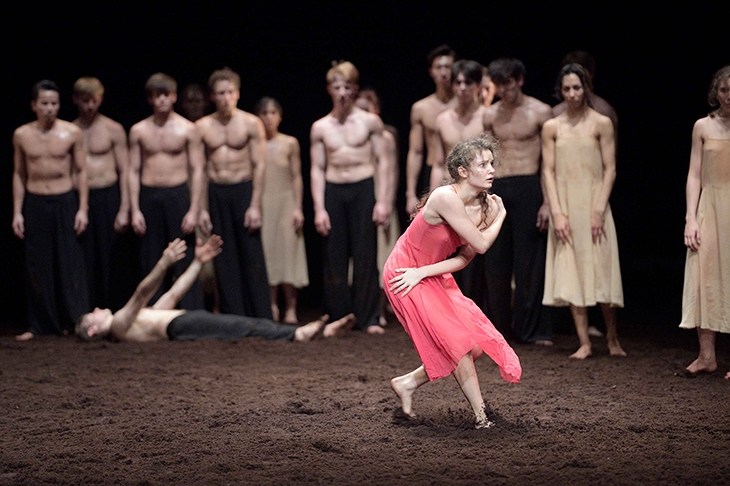‘Where was the Kahlo brow?’ asked my guest in the first interval of English National Ballet’s She Persisted, a triple bill celebrating female choreographers. She was right: Frida had been plucked. It was an odd decision for a production that does not otherwise shy from ugliness. Broken Wings, a ballet inspired by the life of Frida Kahlo by Belgian-Colombian choreographer Annabelle Lopez Ochoa, was first performed in 2016 and is revived here in a carnival of Tehuana skirts, antler bonnets and capering day-of-the-dead skeletons. The surrealist André Breton likened Kahlo’s art to ‘a ribbon around a bomb’ and that is Katja Khaniukova’s Kahlo: silken and explosive.
We see her first as a teenager, all possibility, lifts and lightness. After the trolleybus accident that breaks Kahlo’s spine, Khaniukova is transformed. She is manhandled, stripped, bent and pinioned by four sinister skeletons. She shows us Kahlo’s pain and panic through arrested movement, spasms and a silent agonised scream. She is now rigid, limp as a ragdoll. We see her fearful reckoning with her own reflection and her fractured, twitching bones. Irek Mukhamedov as Diego Rivera is deliberately boorish and graceless, though he overplays his hand: too doddering, too much the buffoon. In the pas de deux, they are like Venus and Vulcan. We need some charisma to believe that defiant, wracked Kahlo would love him.
In her dreams, Kahlo dances. She watches a weird parade of men in flounces who dance with a strength and power denied to her. In these flamboyant, unsettling scenes, colour is more disturbing than darkness. The four skeletons in sombreros haunt and taunt her, funny and frightening in equal parts. Their ladder dance is a delicious riff on Swan Lake’s Dance of the Cygnets. Fittingly strange and surreal.
After Mexico, Nora, an adaptation of Ibsen’s A Doll House by Belgian choreo-grapher Stina Quagebeur to music by Philip Glass, is muted. It is pleasant and pretty but no more so than a warm-up number in a MGM musical. Crystal Costa is a troubled and trembling Nora and Jeffrey Cirio stern as her husband Torvald. Junor Souza is underused as the blackmailing banker Krogstad. A Greek chorus in Gap slacks semaphore Nora’s inner turmoil. It all falls rather flat.
During the second interval, a team of techies wheel bins of earth on to the stage. They tip and rake and shovel the peat to smoothness. The first bars of Stravinsky’s Rite of Spring fill the dimness, shivering every vertebra. The late Pina Bausch’s rendering of the Rite of Spring, first danced in 1975, is electrifying. Josephine Ann Endicott, one of the original company, has said: ‘If you are not exhausted at the end, truly exhausted, then you haven’t danced it properly.’ Exhausted? They’d been through a war.
We open with waifs in white nightdresses. They run hither and yon, beat their breasts and drum the peat. Perfection is soon undone. When the men come on it charges the air with savage sensuality. They gather and part with a fearful momentum like locusts or swarming flies. They stamp with blackened pilgrims’ soles. The pace is feverish, malarial, driven by night terrors. When, at a climactic moment the woman next to me started rummaging in her handbag for a tissue, I wanted to howl.
The spell might have been broken were it not for the brave and brilliant Francesca Velicu who danced the sacrificial victim in a bare-breasted trance of protean pain and abandon. This was a performance of raw power and rare vulnerability.







Comments